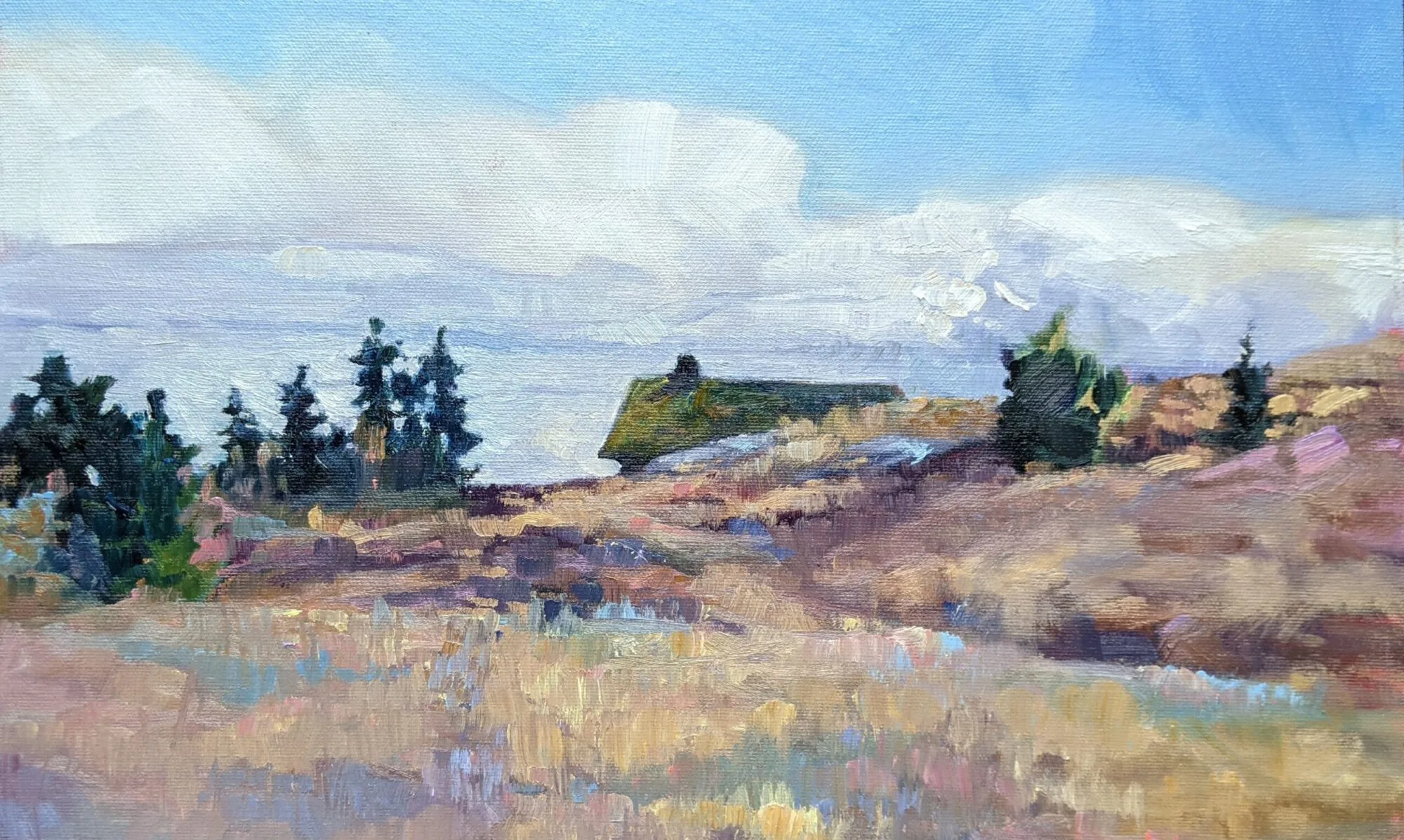See here for more information.
See a brochure here.
| “Sunset at Marshall’s Point” oil on canvas, 8X6 |
“This was the best painting instruction I have ever had. Carol’s advice in color mixing was particularly eye-opening. Her explanations are clear and easy to understand. She is very approachable and supportive. I would take this course again in a heartbeat.” (Carol T., prior workshop participant)
 |
| Mañana Island view from Monhegan (courtesy of Carolyn Mrazek) |
Last fall I was invited to go to Maine to scout out painting locations for a series of workshops this summer. (The managers had observed me teaching at another workshop and liked what they saw.)
I’ve painted on two different trips in the Rockland-Rockport area, once by myself and once with my pal Kristin. However, painting for—and by—oneself is different from planning a painting program for others.
| One of the many lovely places we’ll be painting. |
Painting is a process of exploration; guiding other painters is largely a process of elucidation. When planning a workshop, I endlessly crisscross the region, painting and reconnoitering. (My old atlases have now been replaced by GPS, but the principle of look, paint, and take notes remains the same.) There are practical considerations as well; to me, the most important is to locate comfort stations and coffee.
A good plein air teacher is more than just a decent painter. She has to be a bushwacker, with a decent sense of direction and common sense. She has to meet each of her students at the level at which they’re working. And above all, she must resist the temptation to create a bunch of mini-mes, but rather watch for and nurture each individual “voice” in her class.
| Countless fantastic views. |
A good venue makes teaching that much easier. There should be room for rainy-day painting and a place to clean brushes. There should be comfortable public space to chat and drink wine after a day of hard work. There should be other activities available—hiking, shopping, dining, etc. Lakewatch Manor meets all those criteria.
Plus they are offering a fantastic added attraction: a day painting on Monhegan Island. Twelve miles offshore, Monhegan is a Maine treasure, dotted with hiking trails and artists’ studios. We’ll have painting time and lunch at a private property which adjoins Rockwell Kent’s home—now owned by Jamie Wyeth. From it, we can paint Mañana Island, or we can move off elsewhere on the island for its other iconic views.
One other detail: if you haven’t visited the Farnsworth in Rockland, or the very high-end galleries that have sprung up around it, you’re in for a treat. It’s an extraordinary art scene, and I’m a fairly jaded customer in that respect, having regular access to Manhattan.
 |
|
Sun, Mañana, Monhegan by Rockwell Kent, 1907. Lousy image of a great painting,
and we will get to paint this exact view. |
